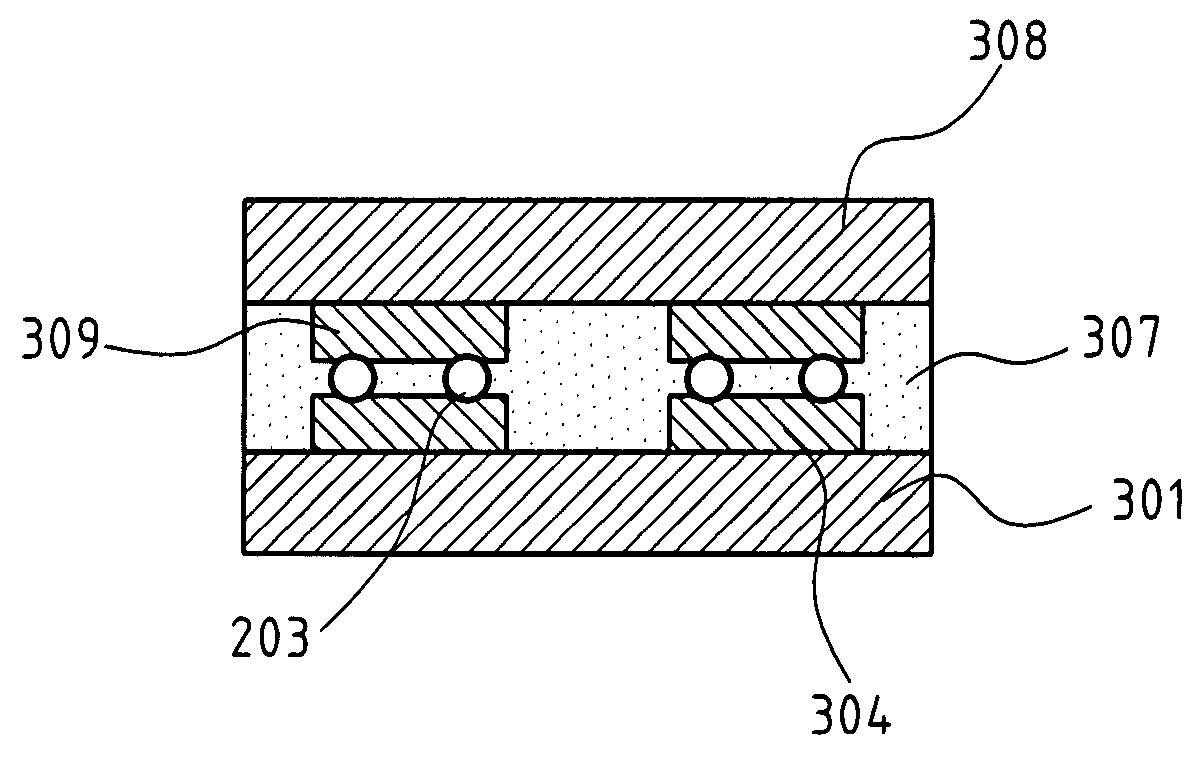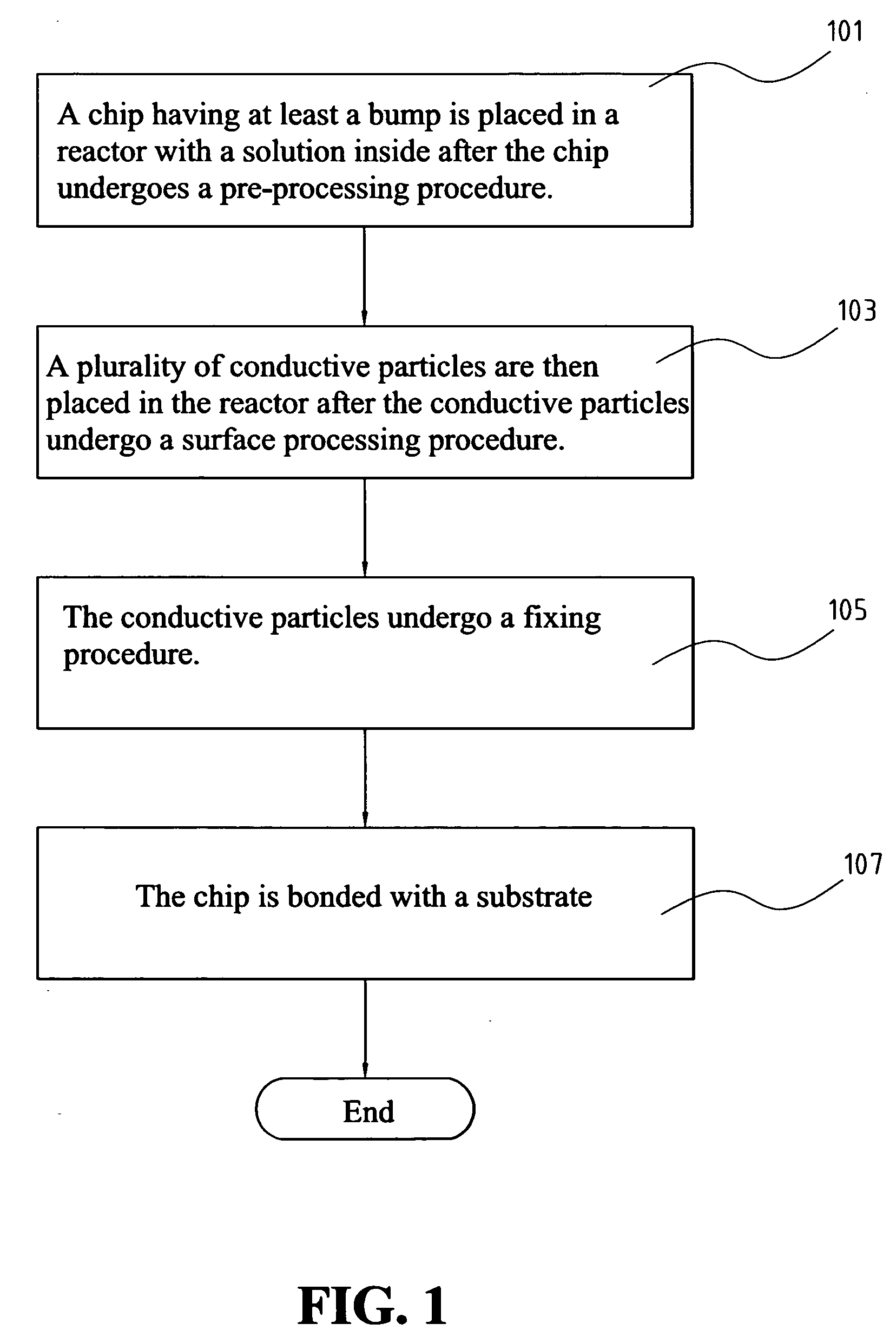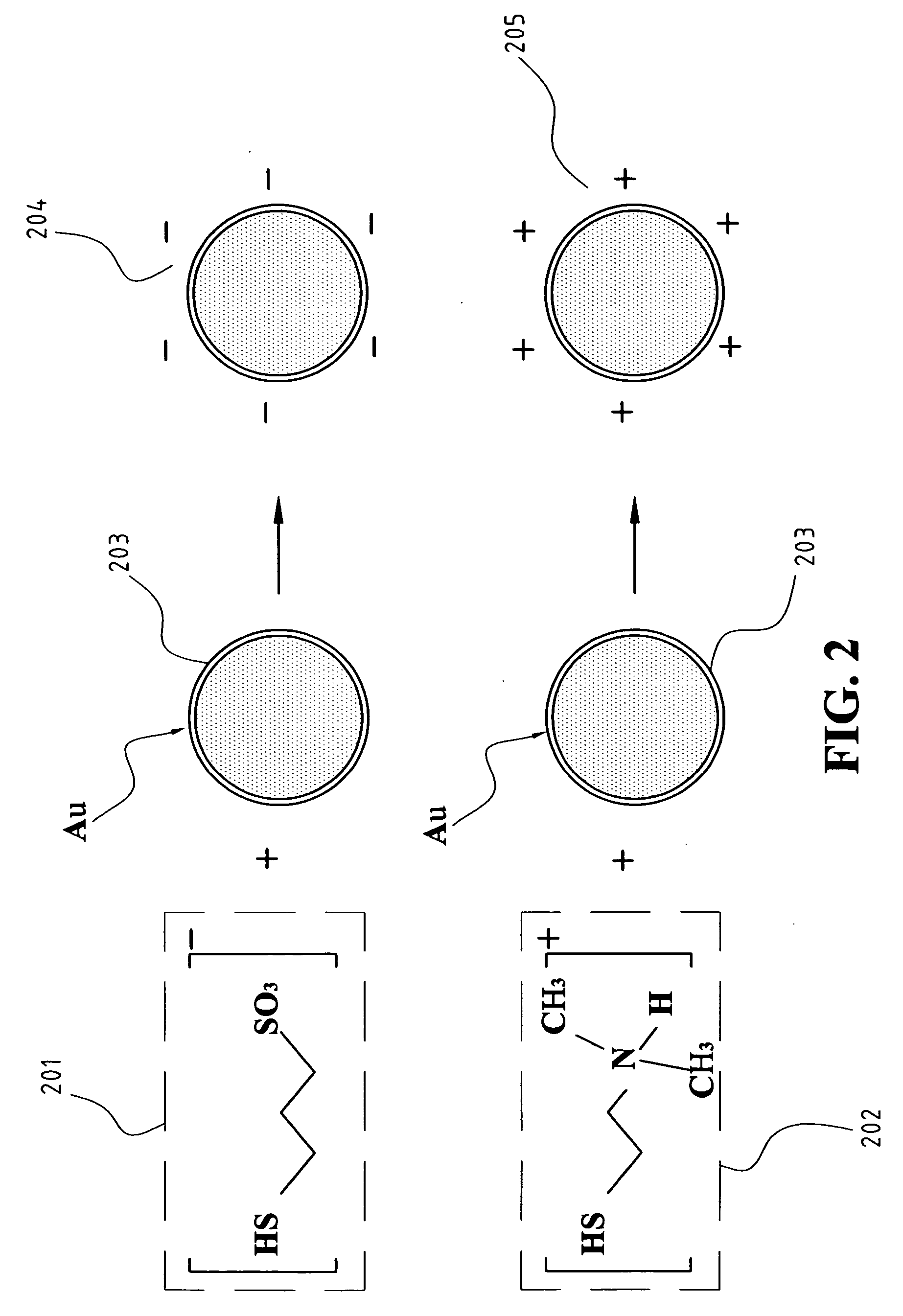Method of conductive particles dispersing
a technology of conductive particles and dispersible particles, which is applied in the direction of basic electric elements, electrical apparatus, and semiconductor devices, can solve the problems of reduced packaging process yield, reduced reliability of packaged ic, and high junction resistance of short circuit or high junction resistance, etc., and achieves low cost and simplified processes
- Summary
- Abstract
- Description
- Claims
- Application Information
AI Technical Summary
Benefits of technology
Problems solved by technology
Method used
Image
Examples
Embodiment Construction
[0021]FIG. 1 is a flowchart showing the steps of the method for dispersing conductive particles according to the present invention. At the first step 101, a chip having at least a pad is placed in a reactor with a solution inside after the chip undergoes a pre-processing procedure. At the second step 103, a plurality of conductive particles are then placed in the reactor after the conductive particles undergo a surface processing procedure. The steps 101 and 103 can also be conducted in a reverse order. At the third step 105, the conductive particles undergo a fixing procedure. At last within the fourth step 107, the chip is bonded with a substrate. According to the present invention, within the pre-processing procedure of the first step 101, the chip is coated with a metallic layer and then an insulation layer, and the insulation layer on the bump is removed by etching. The surface processing procedure of the second step 103 causes the conductive particles to carry charges or carry...
PUM
| Property | Measurement | Unit |
|---|---|---|
| distance | aaaaa | aaaaa |
| distance | aaaaa | aaaaa |
| conductive | aaaaa | aaaaa |
Abstract
Description
Claims
Application Information
 Login to View More
Login to View More - R&D
- Intellectual Property
- Life Sciences
- Materials
- Tech Scout
- Unparalleled Data Quality
- Higher Quality Content
- 60% Fewer Hallucinations
Browse by: Latest US Patents, China's latest patents, Technical Efficacy Thesaurus, Application Domain, Technology Topic, Popular Technical Reports.
© 2025 PatSnap. All rights reserved.Legal|Privacy policy|Modern Slavery Act Transparency Statement|Sitemap|About US| Contact US: help@patsnap.com



